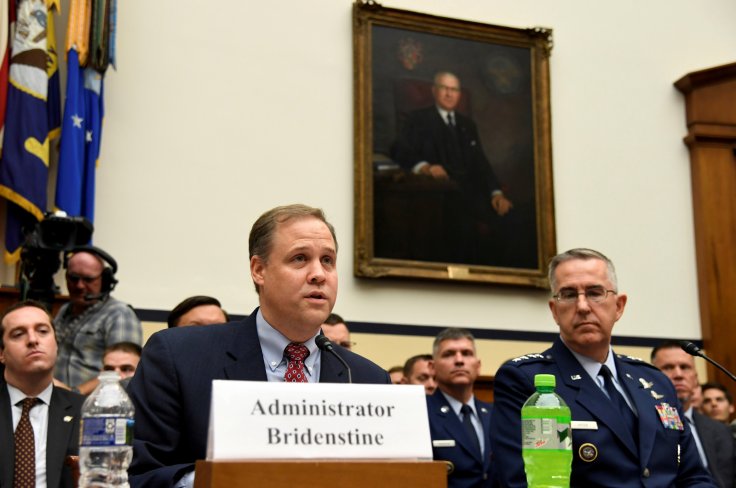
Scientist announced in July that they have found evidence of liquid water lake in Mars that had widened the area of searching for extraterrestrial life on the red planet. Now, again NASA stated that the American space agency has found definitive evidence of water ice on the surface of the moon.
Just a day after NASA unveiled the analysis of the data collected from the lunar orbit by Moon Mineralogy Mapper (M3) instrument aboard Chandrayaan-1, an Indian spacecraft that explored the moon in 2008 and 2009, Jim Bridenstine, NASA Administrator told in a Reuters TV interview in Washington on Tuesday, August 21, "We know that there are hundreds of billions of tons of water ice on the surface of the moon."
Early research materials suggested the water is deep beneath the lunar surface and some of them also claimed that at the lunar South Pole there are pieces of evidence of ice water in the surface. On Monday, August 20 the findings of the data analysis was published in the journal Proceedings of the National Academy of Sciences, and it was the first time when scientists confirmed the presence of water on the moon's surface by direct observation.
As per the NASA officials at NASA's Jet Propulsion Laboratory, this discovery has also suggested that the future lunar expeditions might have a readily available source of water and it would also make the exploration process easier and help the astronomers to stay on the moon.
As per the analysis, hundreds of patches of ice have found at the darkest, coldest regions of the moon's north and south poles. This water would be used for drinking as well as it could be used to produce more rocket fuel and oxygen to breathe in the moon's atmosphere.
A team led by Shuai Li, a researcher at the University of Hawaii's Institute of Geophysics and Planetology have conducted this revolutionary research. As per the scientists, the collected data showed three chemical components that proved the presence of water ice.
Ian Crawford, who is a professor of planetary science and astrobiology at Birkbeck, University of London but has no involvement in the research project, told the Scientific American, "The results seem very convincing to me."
Even after the clear revelation by the former U.S. Navy fighter pilot and Oklahoma congressman Bridenstine, NASA lunar scientist Sarah Noble also added that it is still unknown that how much ice is actually present on the lunar surface and how easy it would be to extract the particular amount of water for necessary use. In addition, she also stated that by using robotic landers or rovers on the moon an exploration in more than one place would definitely help to find out the water ice.

However, Bridenstine, who was named as the NASA chief by President Donald Trump, told Reuters that about the making the next generation of lunar exploration a "sustainable enterprise." He said, "So we want tugs that go from Earth orbit to lunar orbit to be reusable. We want a space station around the moon to be there for a very long period of time, and we want landers that go back and forth between the space station around the moon and the surface of the moon."
Even though the human moon exploration program ended with Apollo 17 mission in 1972, Trump announce the new goals in December 2017 that includes sending astronomers back to the moon and as the ultimate aim he told about the establishment of "a foundation for an eventual mission to Mars."








